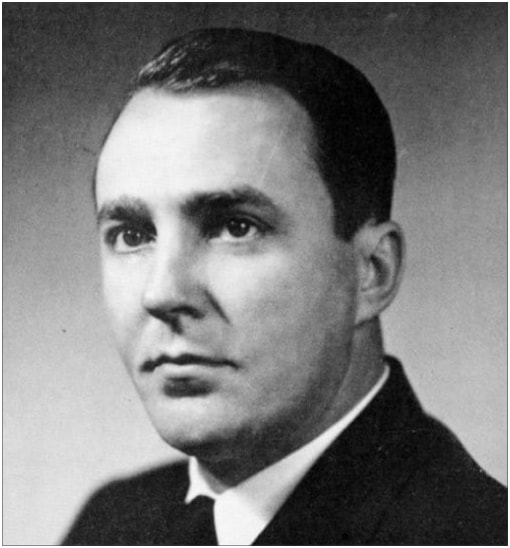Brinsfield, James Stewart

J. Stewart Brinsfield (1913-1995) was 35 years old when he was selected as President of Lee College and the seventh leader of the school. He served from 1948 to 1951 and was regarded as the quintessential leader. Young and energetic, he shared the vision of the faculty in seeking to advance the academic quality of Lee. He and Dean Earl Tapley formed a strong academic team.
President Brinsfield immediately hired faculty members with advanced degrees and expertise, such as James L. Slay, David Du Plessis, Lacy Powell, and Robert Blackwood. These, along with A.T. Humphries, Robert Humbertson, Mary Elsie Powell, Kathryn Blackwood, Hollis Gause, Mary Elizabeth Harrison Green, and Leon Green, were among the academic leaders during that time.
Morale was high on campus and there was an intentional focus on pursuing accreditation for the junior college. But, the Second World War had changed the country and rapid change impacted all of society, including the church. On one hand, the Church of God longed to be accepted by mainstream Evangelicals and, on the other hand, it struggled to hold on to its distinctives. Some church leaders feared Lee was moving too fast, too soon. Even a time of great revival among students on campus did not curb the apprehension held by some.
The church was divided as to what Lee should be. Some wanted a liberal arts college with strong theology and bible programs; others wanted a Bible college with only necessary courses in arts and sciences. President Brinsfield was popular among students and faculty, but the tension with church leadership and other circumstances led to the Board of Directors dismissing him. This action set in motion a decrease in morale among faculty and students, who viewed his dismissal as unnecessary.
Earl Tapley was selected as Acting President for a few months in early 1951. Tapley was a minister and deemed well-qualified for the position, but church leadership was apprehensive. When Tapley was bypassed for the Presidency, morale decreased even more, especially among the faculty who were considered the “visionaries” of that time. Many of them left Lee by 1953, and the decade of the 1950s was one of the lowest for the school as enrollment declined.
A few years before he died, President Brinsfield was welcomed back to campus by then President Paul Conn. Brinsfield Row, a set of student apartments first built in 2004, is named for him.
/ L.F. Morgan
President Brinsfield immediately hired faculty members with advanced degrees and expertise, such as James L. Slay, David Du Plessis, Lacy Powell, and Robert Blackwood. These, along with A.T. Humphries, Robert Humbertson, Mary Elsie Powell, Kathryn Blackwood, Hollis Gause, Mary Elizabeth Harrison Green, and Leon Green, were among the academic leaders during that time.
Morale was high on campus and there was an intentional focus on pursuing accreditation for the junior college. But, the Second World War had changed the country and rapid change impacted all of society, including the church. On one hand, the Church of God longed to be accepted by mainstream Evangelicals and, on the other hand, it struggled to hold on to its distinctives. Some church leaders feared Lee was moving too fast, too soon. Even a time of great revival among students on campus did not curb the apprehension held by some.
The church was divided as to what Lee should be. Some wanted a liberal arts college with strong theology and bible programs; others wanted a Bible college with only necessary courses in arts and sciences. President Brinsfield was popular among students and faculty, but the tension with church leadership and other circumstances led to the Board of Directors dismissing him. This action set in motion a decrease in morale among faculty and students, who viewed his dismissal as unnecessary.
Earl Tapley was selected as Acting President for a few months in early 1951. Tapley was a minister and deemed well-qualified for the position, but church leadership was apprehensive. When Tapley was bypassed for the Presidency, morale decreased even more, especially among the faculty who were considered the “visionaries” of that time. Many of them left Lee by 1953, and the decade of the 1950s was one of the lowest for the school as enrollment declined.
A few years before he died, President Brinsfield was welcomed back to campus by then President Paul Conn. Brinsfield Row, a set of student apartments first built in 2004, is named for him.
/ L.F. Morgan
